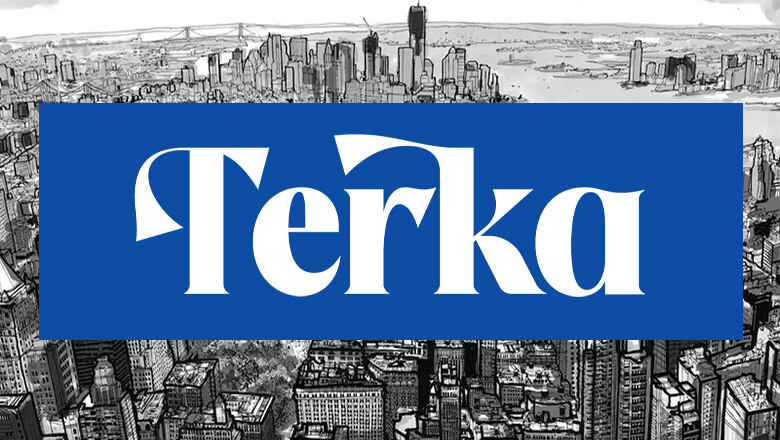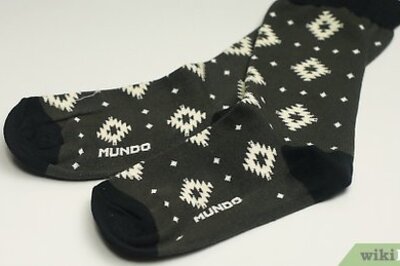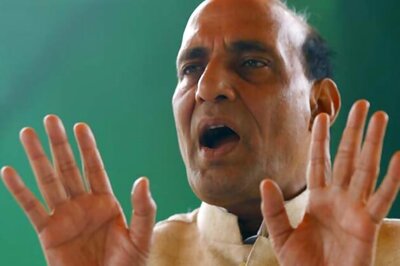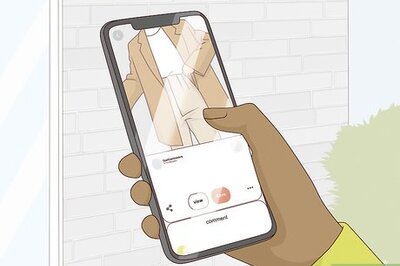
views
What does “Enby” mean?
Enby is a shortened version of “nonbinary.” A nonbinary person is someone whose gender doesn’t fully fall into the category of “man” or “woman.” Nonbinary is an umbrella term used by people whose gender is neither man nor woman, is in-between man and woman, encompasses more than a single gender, or is beyond (or independent of) the gender binary. “Enby” is pronounced more or less like it appears: “En-bee.” So, when someone says they’re an “enby,” they’re saying that they’re nonbinary.
Where does “Enby” come from?
Enby likely originated in 2013 as the phonetic pronunciation of “NB.” “NB” is an abbreviation of “nonbinary.” However, the actual term is spelled “Enby” because “NB” is also the abbreviation for “Non-Black,” and it’s how non-black people of color can identify themselves. So, to avoid confusion or appropriation, the nonbinary and trans communities coined “Enby” as the shortened form of “nonbinary.” “Enby” first appeared on Urban Dictionary in November 2013. Soon after, it began to appear on Tumblr (and then grew popular among the nonbinary and trans communities).
Is enby the same as nonbinary?
Enby means nonbinary, but the two shouldn’t be used interchangeably. That’s because some nonbinary people like the term “enby,” but others don’t refer to themselves that way. It’s essential to use a person’s preferred terms—the ones they ask you to use and feel affirmed by. So, don’t assume any nonbinary person will also like “enby.” Check first—or better yet, just use the terms they give you! Basically, “enby” and “nonbinary” have the same meanings, but “enby” isn’t a universal term used by all nonbinary people.
Different Perspectives on “Enby”
Some people like “enby” because it feels fun and lighthearted. Nonbinary people who use “enby” to refer to themselves tend to enjoy it because it makes them feel connected to the nonbinary community and identity while also being a cute, playful spin on the word! If you’re nonbinary, and “enby” makes you feel comfortable and affirms who you are, then it’s likely a great term for you to use. It’s also important to remember that you don’t have to refer to yourself with the same terms forever. You can change your mind about “enby” (or any other identifiers) anytime!
Others don’t like “enby” and find it condescending and youthful. This could be because “enby” is most common among younger members of the nonbinary community or because “enby” and “baby” have similar pronunciations. “Enby” is also most often used with youthful gendered terms like “boy” and “girl”—so nonbinary people don’t always feel connected to the term. Some nonbinary people feel the term infantilizes them or is too “cute.” And, since “enby” can also be used as a noun (“an enby” instead of just “enby”), it sometimes makes people feel like they’re being dismissed. For some, being called “enby” can even trigger feelings of dysphoria, which is why it’s so important to use a person’s preferred terms. And, when in doubt, just use “nonbinary”!
How to Use “Enby”
Enby can take the place of words like “guy” and “woman.” When you’re using “enby” in a sentence, use it in the same places you’d put a gendered term for someone—boy, girl, man, woman, male, or female. So, instead of saying, “My guy friend moved to Michigan,” you’d say, “My enby friend moved to Michigan.” Similarly, instead of saying, “My child identifies as a woman,” you’d say, “My child identifies as an enby.” “Enby” can be used as an adjective and a noun. So, it’s correct in both of the following sentences: “I’ve been exploring what it means to be enby.” “My favorite character in this show is an enby—I love the representation!”
Use “enby” only when someone asks you to refer to them that way. As mentioned above, “enby” isn’t a universal term in the nonbinary and LGBTQ+ communities—so it’s better to use “nonbinary” to refer to people unless they specifically tell you they want you to use “enby.” Don’t make assumptions! Just because one nonbinary friend asks you to use “enby” doesn’t mean someone else will want that too.
How to Know If You’re Enby
Consider your experience with gender and how you see yourself. The term “nonbinary” generally means you feel your gender exists outside the traditional binary (“man” and “woman”). So, ask yourself if you feel like neither a man nor a woman or if you feel your gender is somewhere in the middle. You may also experience your gender as both! Similarly, do you feel disconnected from the social and societal expectations of the sex you were assigned at birth—or the physical characteristics? Any of the above experiences are entirely valid; there’s no “right” way to feel to be nonbinary. Nonbinary people can also be trans, and many nonbinary people identify as trans (or under the trans umbrella)—but not all trans people are nonbinary.
Notice signs of gender dysphoria you may feel. “Gender dysphoria is a sense of discomfort or dissatisfaction with one’s assigned gender or sex,” explains Hansen. “Sometimes it centers around certain body parts (like having breasts or a penis), and other times it is more focused around the roles or behaviors associated with one’s assigned gender.” So, ask yourself if you feel that sense of persistent discomfort—likely with “multiple aspects of your assigned gender,” according to Hansen. That sense of discomfort isn’t limited to aspects caused by sexism or limited gender roles within a given culture; it will likely go beyond that. Hansen also says that, “At times, a person may shift from a binary to a non-binary identity or vice versa, but this is more a reflection of gender’s ability to be fluid and less about what it means to be non-binary.”
Understanding Enby & Nonbinary Pronouns
People identifying as nonbinary may use gender-neutral pronouns. It’s common for a nonbinary person to use singular “they/them” pronouns instead of (or in addition to) “he/him” or “she/her.” However, being nonbinary certainly doesn’t mean you have to use “they/them,” and many nonbinary people continue using gendered pronouns (or a combination of gendered and gender-neutral). For example, instead of saying, “He went to the store,” you’d say, “They went to the store,” for someone with they/them pronouns. Gender identity doesn’t determine your pronouns; that decision is yours alone. One nonbinary person might use they/them, another might use she/they, and a third might use he/him. It’s a personal choice, not something you’re assigned. Using a person’s correct pronouns is the respectful and polite thing to do. So, even if it’s an adjustment, use preferred pronouns and avoid misgendering people.
Other Nonbinary Identities
“Nonbinary” is both a gender identity and an umbrella term. While many use “nonbinary” as a label to define their gender identity, it’s also a broad term encompassing many more specific gender identities. Some people mistake “nonbinary” as being the third (and final) gender option next to man and woman, but that’s not the case. There are many other identities, including: Gender fluid - Moving between two or more gender identities. Genderqueer - Another umbrella term for anyone with a nonbinary gender identity. However, some may see “genderqueer” as a slur, so make sure a person uses that term before referring to them as genderqueer. Agender - Having no gender identity or an undefined gender identity. Agender is also sometimes used with terms like “genderless” or “neutrois.” Bigender - Having two separate gender identities, either at the same time or alternatively. Demigender - Identifying partially with a gender or multiple genders. Pangender - Identifying as multiple (or infinite) genders—sometimes all genders at once, or other times shifting between genders. Two Spirit - A term Indigenous Americans use to describe different genders with social or ceremonial roles. Like nonbinary, it’s an umbrella term that some Indigenous Americans also use to describe their gender identity.
Discussing Gender Identity & Sexual Orientation
Gender identity is a sense of self as a man, woman, or outside the binary. Someone who is “cisgender” has a gender identity that matches the sex they were assigned at birth. Someone who is “transgender” has a gender identity that doesn’t conform to the sex assigned at birth. Thus, “transgender” is a broad term (which is why nonbinary people also fall under the trans umbrella). Gender identity and gender expression are also separate concepts. Gender identity is linked to your internal sense of self, while gender expression is how you outwardly express your sense of self. You may also have heard of the “gender binary,” which is the (false) concept that there are two genders—man and woman. Although babies are categorized by sex as “male” or “female,” their gender identity can be different from their assigned sex.
Being nonbinary (or “enby”) does not dictate sexual orientation. Gender, sex, and sexual orientation are all different things. Sex is a person’s biology, while gender is a term shaped by social and cultural constructs, and sexual orientation refers to the people someone is attracted to. Nonbinary and enby people can be people of any sex or sexual orientation. Remember: gender, sex, and sexual orientation are independent of one another—so your gender identity doesn’t control your sex or sexual orientation (and vice versa). Nonbinary people can be heterosexual, gay or lesbian, bisexual or pansexual, or any other sexual orientation. Some people believe that “nonbinary” is just a step on the road to a new binary gender—but, as Hansen explains, that’s untrue. “In fact,” Hansen continues, “Non-binary identities appear to be the fastest-growing identity under the broader trans umbrella.” So, if you think you may be nonbinary, don’t let anyone convince you your identity is anything less than 100% valid!




















Comments
0 comment